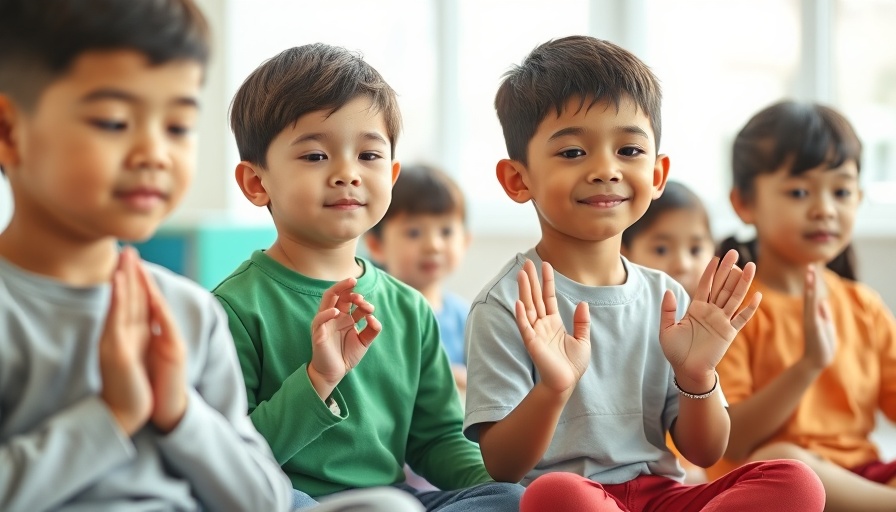
Empowering Kids Through Mindfulness
In today's fast-paced world, children often encounter stress and overwhelming emotions at a young age. Anxiety, frustration, and sadness can sometimes feel like insurmountable challenges for kids, leading to a need for effective strategies that promote emotional well-being. This is where the Calming Hands practice steps in, offering a creative and interactive way to cultivate mindfulness and emotional resilience.
The Calming Hands Technique Explained
Developed by Rose Felix Cratsley at Ivy Child International, the Calming Hands exercise combines serene breathing techniques with engaging art activities, enabling children to connect with their emotions while having fun. The two-fold approach involves using mindfulness practices and art to help kids escape the clutches of negative emotions. By breathing deeply and focusing on their hands—considered tools of calm—they learn that it’s possible to redirect feelings of anxiety into moments of peace.
How to Create a Sense of Safety
At its heart, the Calming Hands practice is about creating a safe place for children to express and observe their feelings. Having them engage in mindful breathing and counting can significantly alleviate feelings of uncertainty and turmoil. This emotional anchoring technique promotes self-sufficiency, allowing children to develop their tools for coping. Incorporating sensory elements—different textures and colors through handprint art—adds to this safe space, making the practice both tactile and visually appealing.
Building Strong Family Connections
Mindfulness is a collective journey, especially when practiced within families. Caregivers modeling the Calming Hands practice alongside their children fosters a sense of community and understanding, reinforcing the idea that mindfulness is not just an individual effort but a family ritual.
Art as a Medium for Expression
Art plays a pivotal role in the Calming Hands activity, transforming an emotional regulation exercise into a vibrant self-expression opportunity. After creating their handprint masterpieces, kids can use colors, designs, and decorations that reflect their personality and feelings, making the activity not only therapeutic but also fulfilling. This integration of creativity helps cement the practice as an enjoyable part of their routine, enhancing its effectiveness.
Practical Steps to Implement Calming Hands
To try the Calming Hands practice at home, gather the following materials: large sheets of paper, non-toxic paints, markers, or crayons. First, have your child create a handprint. Next, number their fingers from one to ten, encouraging them to breathe deeply as they progress. This simple yet profound exercise blends art and mindfulness, making it accessible and engaging for children. Calming Hands is perfect for all ages and adapts well for children with sensory needs, providing various textures to explore during the activity.
Inspiring Family Time and Emotional Growth
By participating in the Calming Hands practice, families foster deeper connections while actively promoting emotional awareness and resilience among children. In a society where mental wellness is gaining prioritized attention, employing such techniques can be life-altering. Empowering kids to manage their emotions not only builds confidence but equips them with coping mechanisms they will carry into adulthood.
Conclusion
Engaging in the Calming Hands activity could lead to a powerful transformation in how you and your child deal with emotions. When practiced consistently, mindfulness not only decreases anxiety but also strengthens family bonds. Incorporate this practice into your family routine today, and watch as your collective emotional intelligence flourishes.
 Add Row
Add Row  Add
Add 




 Add Row
Add Row  Add
Add 

Write A Comment